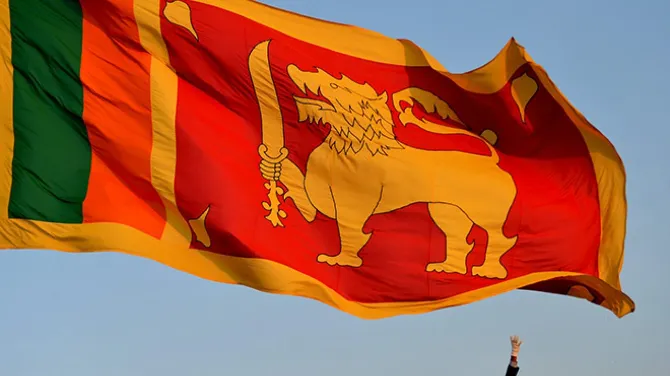
Sri Lanka was the first country in South Asia to open its economy in 1977. India started opening its economy only in 1991. Since liberalising, Sri Lanka has frequently been to the International Monetary Fund (IMF) for assistance and is currently in its 17th IMF programme, however, India has not gone to the IMF since liberalising its economy. As Sri Lanka recovers from its worst economic crisis since independence, it needs to look at India for guidance and work closer with India for economic growth in the long term.
The economic rise of Tamil Nadu and India
India is rising economically each year. It is the fastest-growing major economy in the world. It also has a favourable demographic dividend, unlike China. In an ageing world, India has an advantage and looks well set to capitalise on this. In terms of purchasing power parity, India is the third-largest economy in the world, and in GDP terms, it is set to be the third-largest economic power by 2035.
Tamil Nadu is not only the closest state in India to Sri Lanka geographically, but it also shares a language with Sri Lanka. Sri Lanka has much to gain economically by closer economic ties with the state. According to Deloitte, Tamil Nadu’s economy is set to be a US$1-trillion economy by 2034 if it can sustain its current average annual growth rate of 10 percent. Tamil Nadu’s economy as of now is almost as large as Pakistan’s economy and if it can sustain its double-digit growth after becoming a US$1-trillion economy by 2034, it will have an economy that is estimated to be larger than Russia by the early 2040s. If Sri Lanka can utilise its strategic location, it has much to gain. Tamil Nadu is one of the most industrialised states, having the largest number of factories in India.
Closer economic integration between India and Sri Lanka can result in technology transfer, skills transfer, and investment flow towards Sri Lanka. Half of Sri Lanka’s GDP is in its Western province which only has a quarter of Sri Lanka’s population. This highlights the unequal distribution of economic output and wealth. The talks of a land bridge between India and Sri Lanka can lead to increased trade between South India and the impoverished northern part of Sri Lanka, resulting in economic upliftment of the latter.
How Sri Lanka benefits
There is already investment from India in ports in Colombo and there is interest in Trincomalee in Sri Lanka. This is a positive move as Indian firms see the potential of Sri Lanka as a logistical hub. Greater integration can transform Sri Lanka into a logistics hub as global firms will see Sri Lanka as a gateway to India. Increased air connectivity between Sri Lanka and Indian cities can also drive Sri Lanka’s role as a regional air travel hub. The losses made by Sri Lanka’s national airline in 2022 were almost 1 percent of Sri Lanka’s GDP. This is a staggeringly high amount of loss which is more than Sri Lanka’s entire social safety budget for 2022. If the airline can be sold to a strategic player like India’s Tata Group, Colombo can be an airline hub, bringing enormous benefits for Sri Lanka.
Indian electricity is one of the most cost-effective in the world. Connecting the national electricity grids of the two nations can benefit Sri Lanka as it helps secure its energy requirements at a cheaper price. This was discussed positively during the recent visit by Indian Finance Minister Nirmala Sitharaman to Sri Lanka. Sri Lanka is experiencing devastating effects due to fluctuating energy prices globally. It can also look at India as a market for exporting energy if the former can utilise its energy potential wisely. The World Bank states that Sri Lanka’s potential offshore wind energy exceeds its demands and if it can attract investments and develop its offshore wind energy capabilities, it can export energy to India through the grid. This can result in Sri Lanka obtaining much needed foreign exchange. As Tamil Nadu is growing rapidly, it can be a market for Sri Lanka’s excess energy if Sri Lanka can tap into renewable energy. Nepal and Bangladesh have already connected their grids to India. Nepal’s grid connectivity with the Indian states Uttar Pradesh and Bihar has benefitted both the countries. Following this example will safeguard Sri Lanka from energy shortages.
India is Sri Lanka’s largest trade partner. There is potential for Sri Lanka to increase its exports to India and balance the large trade deficit with the latter. Increased trade liberalisation with India will result in some industries in Sri Lanka being affected negatively but it will also result in Sri Lankan companies being able to increase revenue by gaining access to the lucrative Indian market. With India’s middle class expected to grow to 700 million by 2030, many Sri Lankan firms can gain economies of scale which is currently not possible as Sri Lanka is a smaller market. Once Sri Lankan firms gain economies of scale using the Indian market, they can be more competitive when exporting to the rest of the world.
The move toward the economic and technical cooperation agreement (ETCA) between India and Sri Lanka will increase trade and investments in addition to boosting the service sectors of both countries. It is set to focus on trade facilitation and technology cooperation among other areas. Although some segments in Sri Lanka fear opening its market to a larger neighbour whose private sector has an advantage in terms of economies of scale, the ETCA agreement will benefit Sri Lanka. A point to be noted is that since the India-Sri Lanka Free Trade Agreement (FTA), only 5 percent of Indian exports to Sri Lanka have been tapping into the benefits of the agreement as opposed to 60 percent of Sri Lankan exports. This is proof that enhancing the FTA with an ETCA will have larger benefits for Sri Lanka.
Closer economic ties can draw larger Indian investment into Sri Lanka as India is one of Sri Lanka’s largest Foreign Direct Investment (FDI) sources. With the new government of President Ranil Wickremesinghe looking to liberalise Sri Lankan trade with plans to join the Regional Comprehensive Economic Partnership (RCEP) and the signing of a FTAwith Thailand next year, Indian firms can look at export focused FDI into Sri Lanka. These will result in increased job opportunities for Sri Lankans and also technology and skills transfer.
Sri Lanka has one of the most protected economies in the world. This has made many industries, as seen in several inward-focused countries, very comfortable at home. This means they are less innovative and unable to compete on the global market resulting in less exports. Opening up the economy to India, will result in companies that are unable to compete closing down. Sri Lankan resources can be used to build new industries which will give Sri Lanka a comparative advantage in the global market.
Way forward for Sri Lanka
A closer relationship with India is the way forward for Sri Lanka. The economic crisis last year proved that Sri Lanka may have many friends around the world but it was India’s US$4 billion in aid which saved Sri Lanka from economic anarchy. India will always remain an immediate neighbour and the most important bilateral relationship for Sri Lanka politically. So, it only makes sense to integrate its economy more closely with India.
Talal Rafi is an Economist and an Expert Member of the World Economic Forum.
The views expressed above belong to the author(s). ORF research and analyses now available on Telegram! Click here to access our curated content — blogs, longforms and interviews.




 PREV
PREV


